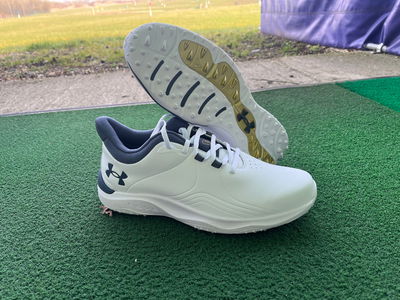Ten of the Best: Playing in the rain tips
Don't let the wet weather ruin your round of golf out on the course, tackle the elements with our guide on playing in the rain

Now we're moving into the autumn we might have to forget those glorious summer days soonish. Many non-golfers think we’re mugs to play in the rain – and only the hardiest of American souls venture out, even if the clouds are only threatening.
In 2012, golf participation kept steady despite the poor summer weather so why can't we do the same this winter? Rain and wind don't need to be an issue!
In my view, it’s better than no golf at all and you never stop learning about this game – whatever the weather. Here’s a few tips – some obvious, others not so – for playing in the rain.
1. Keep dry
Sounds obvious, I know but there’s an art to keeping dry in the wet. So many golfers set out unprepared. A good quality waterproof suit is a must in UK conditions – and one that’s roomy enough to swing in, despite warm, bulky clothing underneath.
Trousers, with adjustable leg vents making it easier to disrobe mid-round if necessary, are also essential, together with lined pockets.
2. Get a hat!
Eighty per-cent of heat in your body escapes through the top of your head so ensure you wear a cap, beanie or woolly hat in the wet.
3. Spikes or softspikes?
A good, solid pair of golf shoes are worth investing in – preferably plain black or brown. Two-tone colours or white tend to fade and discolour quickly.
Though many courses now demand softspikes, if you can get away with metal spikes, it’s worth considering for better grip. If you have to wear softspikes make sure you carry a small stiff brush with you. The only down side to these green-friendly cleats is that they clog easily.
4. Spare gloves and towels
All-weather gloves made of synthetic material are a must in the wet, as opposed to cabretta leather, which stretches and slips and ruins very quickly.
Keep at least a couple of spare gloves in a waterproof plastic bag within your golf bag, together with a couple of small towels to keep your grips dry. One good tip I've picked up is to keep a spare glove ‘warming’ or drying under your hat.
Check out the Under Armour Cold Gear Golf Glove to keep you warm and dry as the bad weather moves in.
5. Keep bag dry, too
Despite their expense and high quality finishing, it’s hard to keep an exposed golf bag dry and free from leaking because of the number of zipped compartments.
If you play a lot in the winter, it’s worth investing in a plastic bag cover, ideally see-through, where you can get easy access to your clubs and bag pockets.
6. Know the Rules
Playing in the wet usually means ‘winter Rules’ or ‘preferred lies’ on closely mown areas through the green (that’s fairway and fringe between tee and green and on the green, in layman’s terms).
This ruling allows you to mark your ball, clean it and replace (not drop) it, within six inches of where it originally came to rest, but not nearer the hole.
7. Relief from casual water
Wet conditions often means casual water. If this affects your stance, line of intended swing or the position of the ball (even if it’s in the rough) you can clean the ball and drop it without penalty at the nearest point of full relief from the condition, not nearer the hole but not necessarily in the fairway.
If you come up against casual water in a bunker you can take relief without penalty in a similar way but only within the hazard. There is no relief without penalty from casual water in any other hazard.
There are times when you end up in the bunker and unfortunately there's no relief, so check out our instructional guide on how to play the dreaded bunker shot from wet sand.
8. Accept the weather’s limitations
When it’s wet (and probably cold, too) the ball travels less far, so allow for this in your club selection. For a 150-yard shot, for example take at least an extra club (say 4-iron as opposed to 5-iron) as there will be little roll on impact with the ground.
As conditions under foot will be wet and slippery, ensure you take a slightly wider stance for extra stability and swing within yourself.
9. Use woods not long irons
Long irons are notoriously difficult to strike with any consistency, especially in the wet. Height is particularly difficult to achieve.
Consider making more use of fairway metals like 5-, 7- and 9-wood in such conditions, you’ll get more loft because of the low centre of gravity in the club head and the carefully designed head will nip the ball cleanly off soggy ground.
10. Be bold with your chipping and putting
Around the green there’s little scope for delicacy in the wet. So be bold. Position the ball towards the back of your stance and play the shot with your arms to get a solid strike and the ball rolling.
In wet winter conditions, greens will inevitably be slow and bumpy so be positive with your putting, too. Take any break or borrow out of the putt by ensuring a firm strike into the back of the hole.
But before you even take the stroke you need to know which wedge you're going to take, which is another vital decision for chipping and pitching in the rain.
Originally published June 2006, updated September 2013.
Want anymore wet game tips? Check out these other articles on playing in the wind and rain...
Adjust your grip in the wet weather
Ten of the Best: Golf in the wind tips











